Manufacturing Feasibility and Forming Properties of Cu-4Sn in Selective Laser Melting
Abstract
:1. Introduction
2. Materials and Methods
2.1. Experimental Materials
2.2. Experimental Equipment
2.3. Experimental Methods
3. Results and Discussion
3.1. Single-Track Experiments
3.2. The Experiment of Greco-Latin Square Design
3.3. Analysis of Variance
3.4. Forming Properties
4. Conclusions
- The best RD value (93.68%) was obtained using an optimal SLM processing parametric set of LP = 195 W, SS = 50 mm/s and HS = 60 μm. The best Vickers hardness (118 HV 0.3/5) was also acquired using an SLM processing parametric set (i.e., LP = 195 W, SS = 200 mm/s, and HS = 120 μm).
- During the experimental process, single-track experiments with different combinations of processing parameters can effectively narrow down selection windows for various parameters. Greco-Latin square design experiments with orthogonal parameter arrays can effectively reduce the number of experiments to acquire optimal processing parameters.
- The ANOVA permits one to identify statistical influences of processing parameters on RD and Vickers hardness. It is noted that RD and Vickers hardness of Cu-4Sn specimens produced by SLM depend strongly on the LP.
- The highest tensile strength achieved for Cu-4Sn in SLM is only 316–320 MPa, which is much less than that of traditional pressure-processed Cu-4Sn. The main reason for this is due to some internal defects of specimens, such as grooves, pores, and balling. These defects can be inhibited effectively by further improving LP.
Acknowledgments
Author Contributions
Conflicts of Interest
References
- Kruth, J.P.; Levy, G.; Klocke, F.; Childs, T.H.C. Consolidation phenomena in laser and powder-bed based layered manufacturing. CIRP Ann. Manuf. Technol. 2007, 56, 730–759. [Google Scholar] [CrossRef]
- Yap, C.Y.; Chua, C.K.; Dong, Z.L.; Liu, Z.H.; Zhang, D.Q.; Loh, L.E.; Sing, S.L. Review of selective laser melting: Materials and applications. Appl. Phys. Rev. 2015, 2, 041101. [Google Scholar] [CrossRef]
- Wang, Z.M.; Guan, K.; Gao, M.; Li, X.Y.; Chen, X.F.; Zeng, X.Y. The microstructure and mechanical properties of deposited-in718 by selective laser melting. J. Alloys Compd. 2012, 513, 518–523. [Google Scholar] [CrossRef]
- Edwards, P.; Ramulu, M. Fatigue performance evaluation of selective laser melted Ti–6Al–4V. Mater. Sci. Eng. A 2014, 598, 327–337. [Google Scholar] [CrossRef]
- Thijs, L.; Verhaeghe, F.; Craeghs, T.; Van Humbeeck, J.; Kruth, J.P. A study of the micro structural evolution during selective laser melting of ti-6al-4v. Acta Mater. 2010, 58, 3303–3312. [Google Scholar] [CrossRef]
- Mumtaz, K.A.; Hopkinson, N. Laser melting functionally graded composition of waspaloy® and zirconia powders. J. Mater. Sci. 2007, 42, 7647–7656. [Google Scholar] [CrossRef]
- Wang, D.; Yang, Y.; Liu, R.; Xiao, D.; Sun, J. Study on the designing rules and processability of porous structure based on selective laser melting (SLM). J. Mater. Process. Technol. 2013, 213, 1734–1742. [Google Scholar] [CrossRef]
- Wang, D.; Wang, Y.M.; Wang, J.H.; Song, C.H.; Yang, Y.Q.; Zhang, Z.M.; Lin, H.; Zhen, Y.Q.; Liao, S.X. Design and fabrication of a precision template for spine surgery using selective laser melting (SLM). Materials 2016, 9, 608. [Google Scholar] [CrossRef]
- Caron, R.N. Copper: Alloying. In Reference Module in Materials Science and Materials Engineering; Elsevier: Amsterdam, The Netherlands, 2016. [Google Scholar]
- Barik, R.C.; Wharton, J.A.; Wood, R.J.K.; Tan, K.S.; Stokes, K.R. Erosion and erosion–corrosion performance of cast and thermally sprayed nickel–aluminium bronze. Wear 2005, 259, 230–242. [Google Scholar] [CrossRef]
- Scudino, S.; Unterdörfer, C.; Prashanth, K.G.; Attar, H.; Ellendt, N.; Uhlenwinkel, V.; Eckert, J. Additive manufacturing of cu–10sn bronze. Mater. Lett. 2015, 156, 202–204. [Google Scholar] [CrossRef]
- Gu, D.; Shen, Y. Balling phenomena during direct laser sintering of multi-component cu-based metal powder. J. Alloys Compd. 2007, 432, 163–166. [Google Scholar] [CrossRef]
- Gu, D.; Shen, Y.; Lu, Z. Microstructural characteristics and formation mechanism of direct laser-sintered cu-based alloys reinforced with ni particles. Mater. Des. 2009, 30, 2099–2107. [Google Scholar] [CrossRef]
- Song, C.H.; Yang, Y.Q.; Liu, Y.; Luo, Z.Y.; Yu, J.K. Study on manufacturing of W-Cu alloy thin wall parts by selective laser melting. Int. J. Adv. Manuf. Technol. 2015, 78, 885–893. [Google Scholar] [CrossRef]
- Sing, S.L.; Lam, L.P.; Zhang, D.Q.; Liu, Z.H.; Chua, C.K. Interfacial characterization of slm parts in multi-material processing: Intermetallic phase formation between alsi10mg and c18400 copper alloy. Mater. Charact. 2015, 107, 220–227. [Google Scholar] [CrossRef]
- Liu, Z.H.; Zhang, D.Q.; Sing, S.L.; Chua, C.K.; Loh, L.E. Interfacial characterization of slm parts in multi-material processing: Metallurgical diffusion between 316l stainless steel and c18400 copper alloy. Mater. Charact. 2014, 94, 116–125. [Google Scholar] [CrossRef]
- Popovich, A.; Sufiiarov, V.; Polozov, I.; Borisov, E.; Masaylo, D.; Orlov, A. Microstructure and mechanical properties of additive manufactured copper alloy. Mater. Lett. 2016, 179, 38–41. [Google Scholar] [CrossRef]
- Wang, X.J.; Zhang, L.C.; Fang, M.H.; Sercombe, T.B. The effect of atmosphere on the structure and properties of a selective laser melted Al-12Si alloy. Mater. Sci. Eng. Struct. Mater. Prop. Microstruct. Process. 2014, 597, 370–375. [Google Scholar] [CrossRef]
- Gu, D.; Shen, Y. Effects of processing parameters on consolidation and microstructure of W–Cu components by dmls. J. Alloys Compd. 2009, 473, 107–115. [Google Scholar] [CrossRef]
- Yadroitsev, I.; Smurov, I. Selective laser melting technology: From the single laser melted track stability to 3d parts of complex shape. Phys. Procedia 2010, 5, 551–560. [Google Scholar] [CrossRef]
- Yadroitsev, I.; Gusarov, A.; Yadroitsava, I.; Smurov, I. Single track formation in selective laser melting of metal powders. J. Mater. Process. Technol. 2010, 210, 1624–1631. [Google Scholar] [CrossRef]
- Oehlert, G.W. A First Course in Design and Analysis of Experiments; Kluwer Academic Publishers: New York, NY, USA, 2000; pp. 45–50. [Google Scholar]
- Yadroitsev, I.; Yadroitsava, I.; Bertrand, P.; Smurov, I. Factor analysis of selective laser melting process parameters and geometrical characteristics of synthesized single tracks. Rapid Prototyp. J. 2012, 18, 201–208. [Google Scholar] [CrossRef]
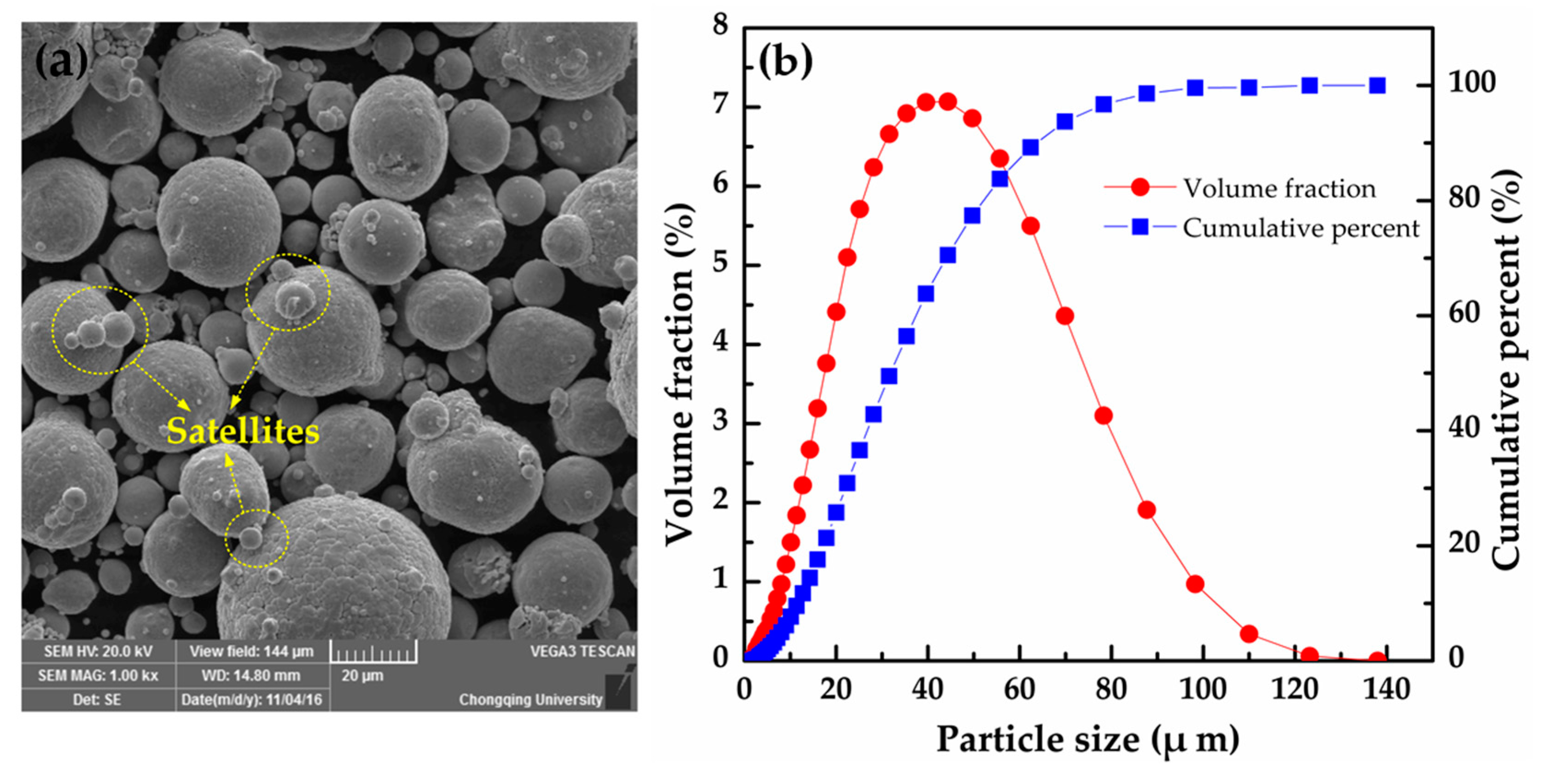
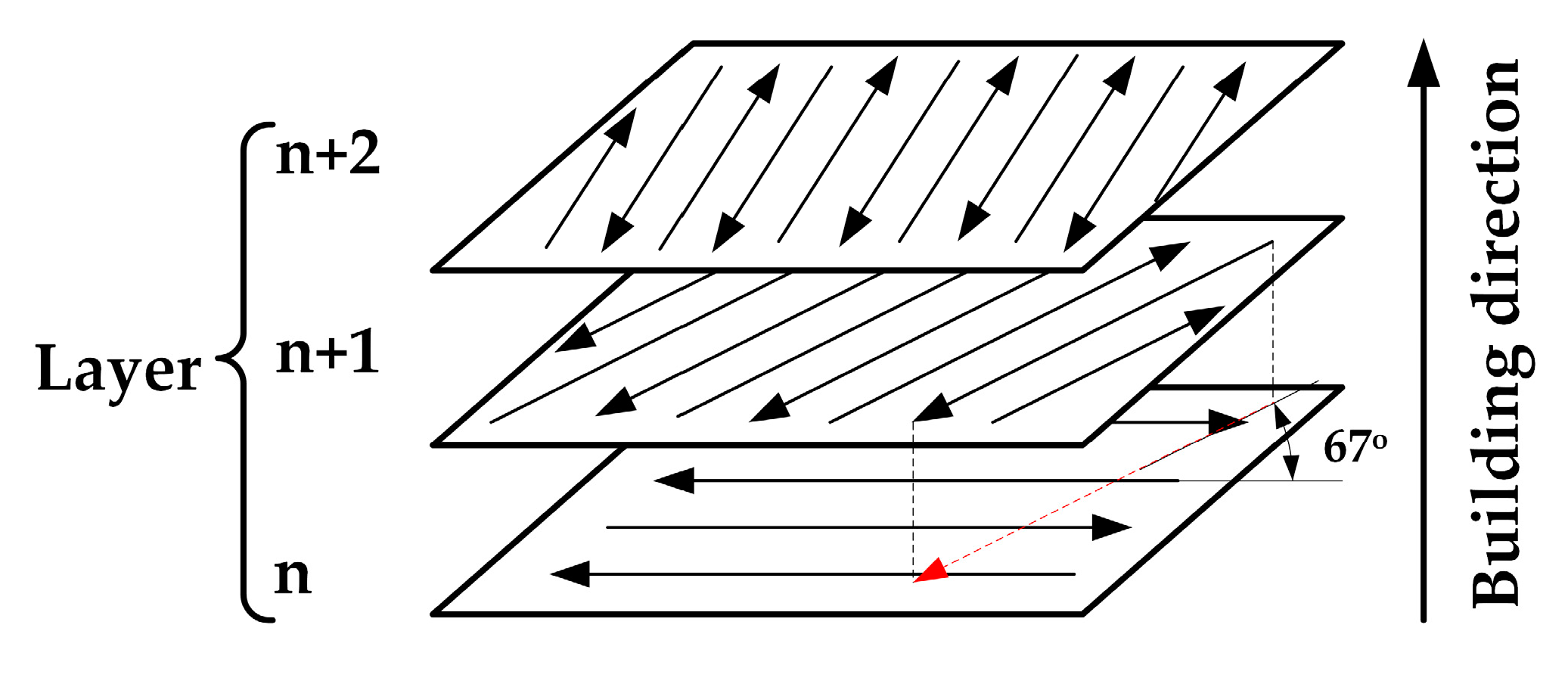
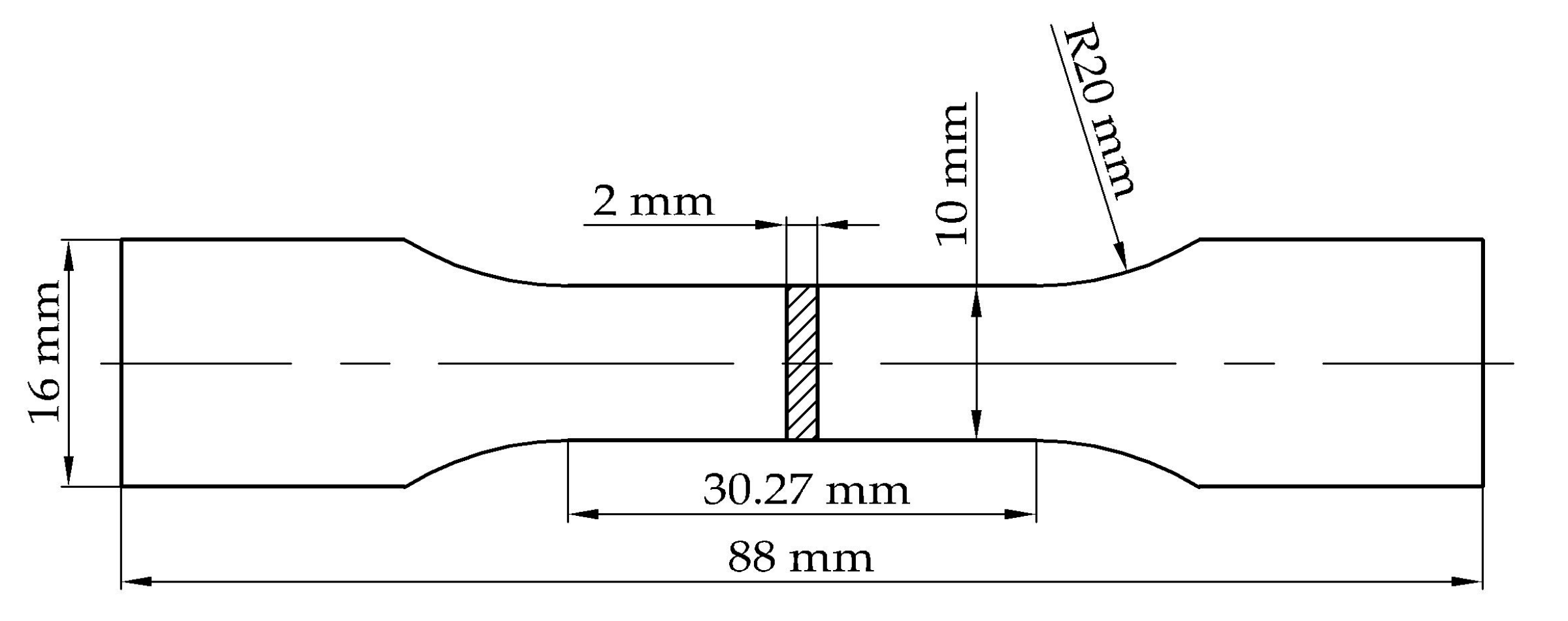
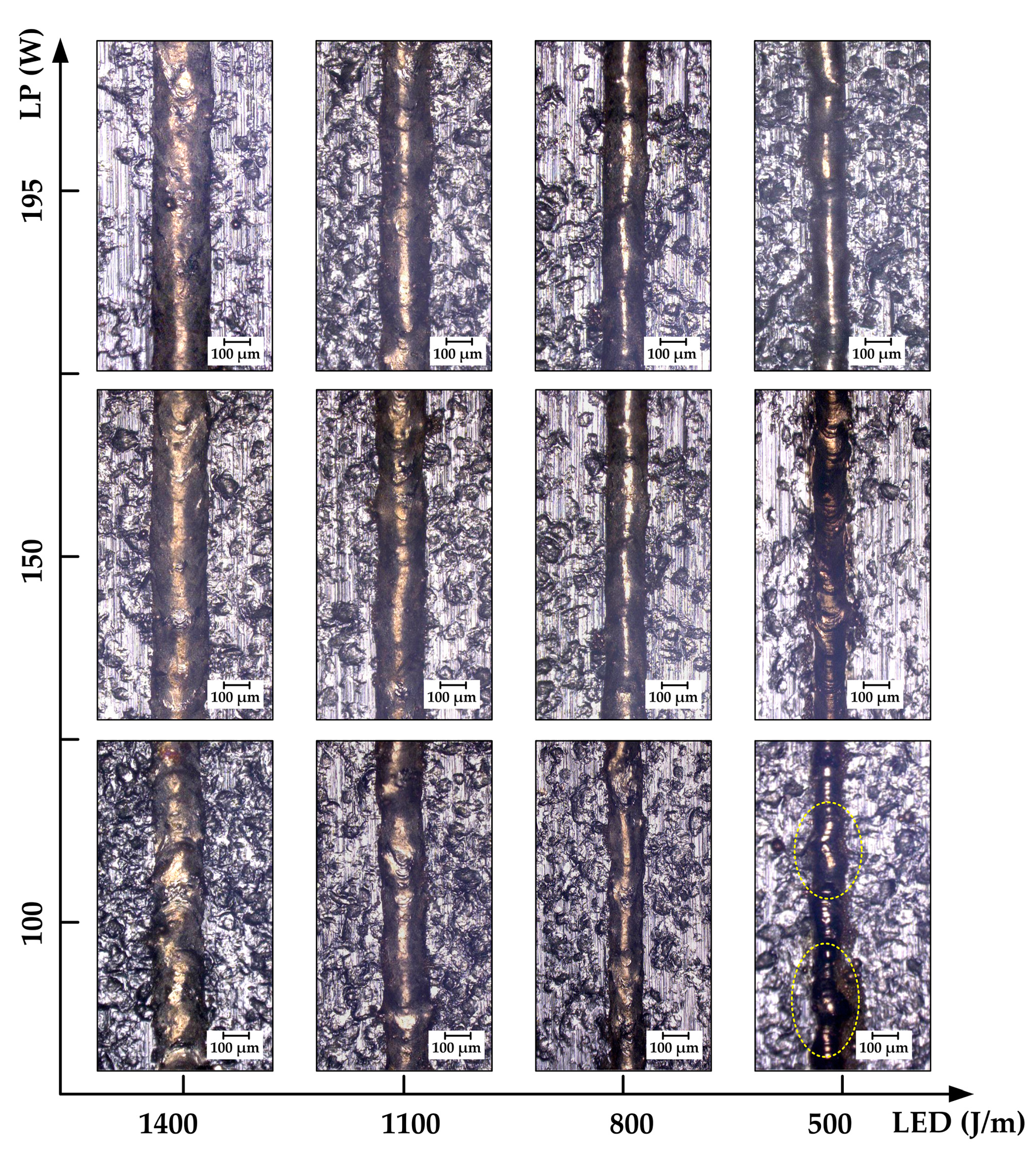
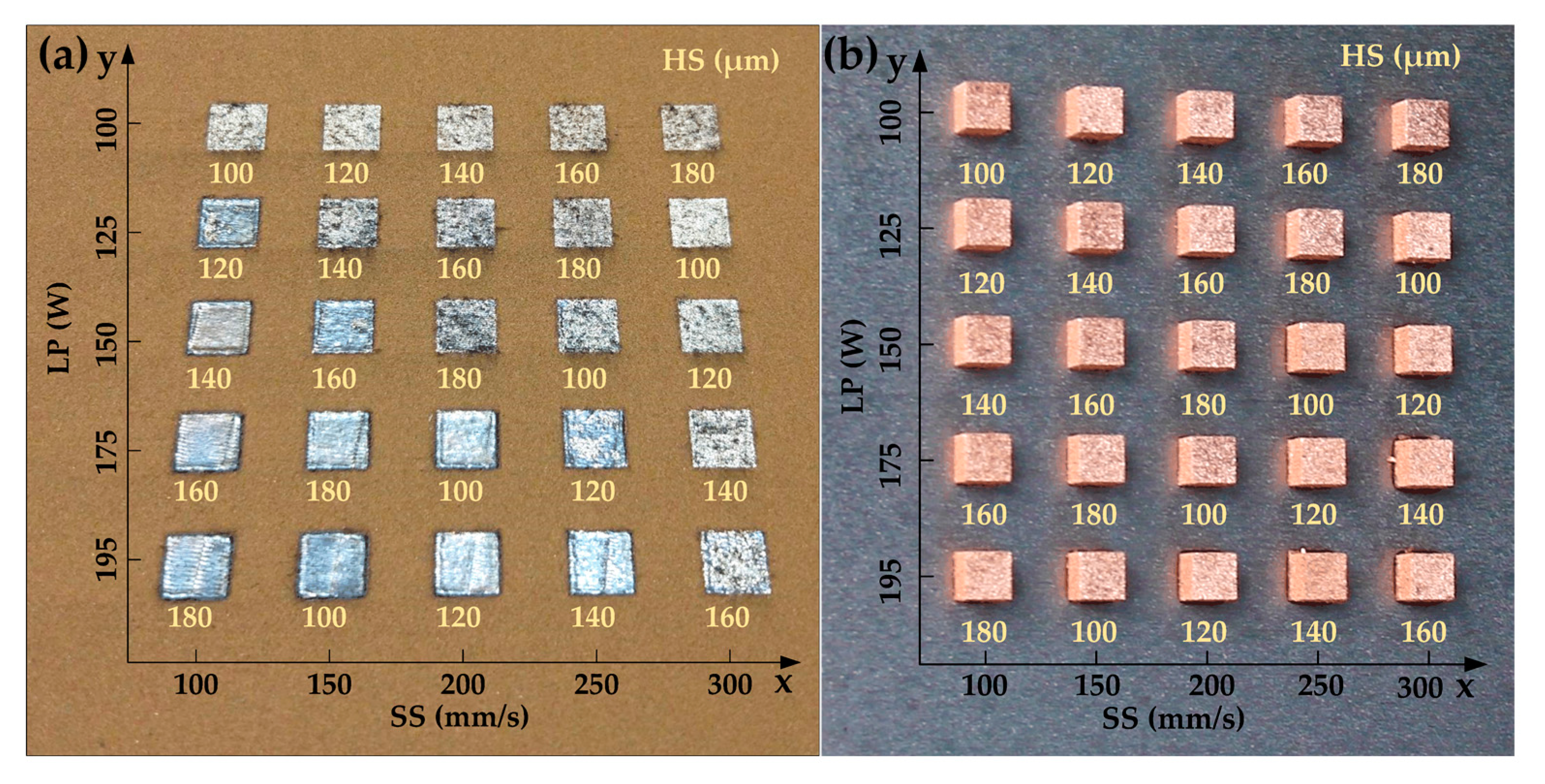
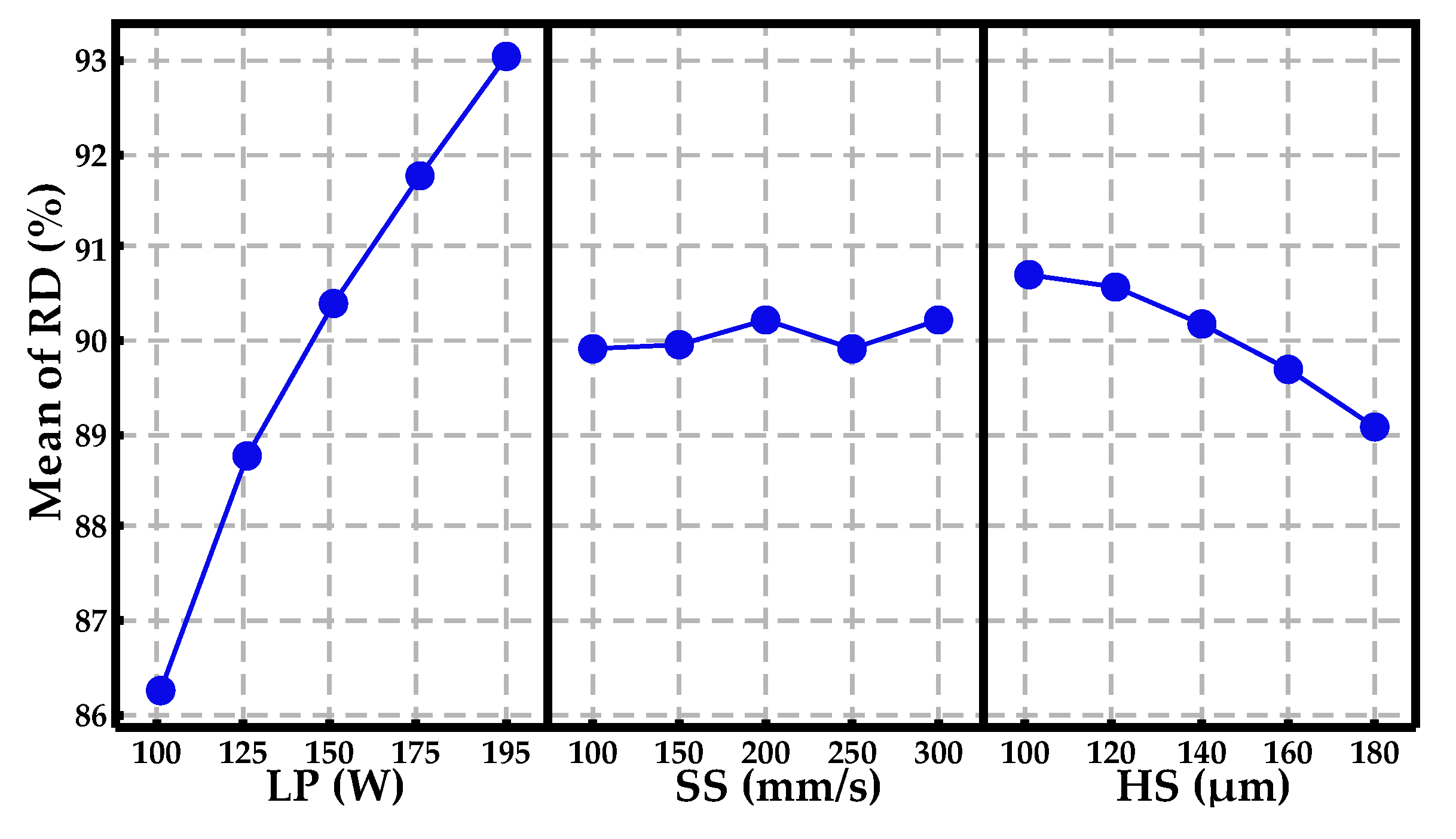
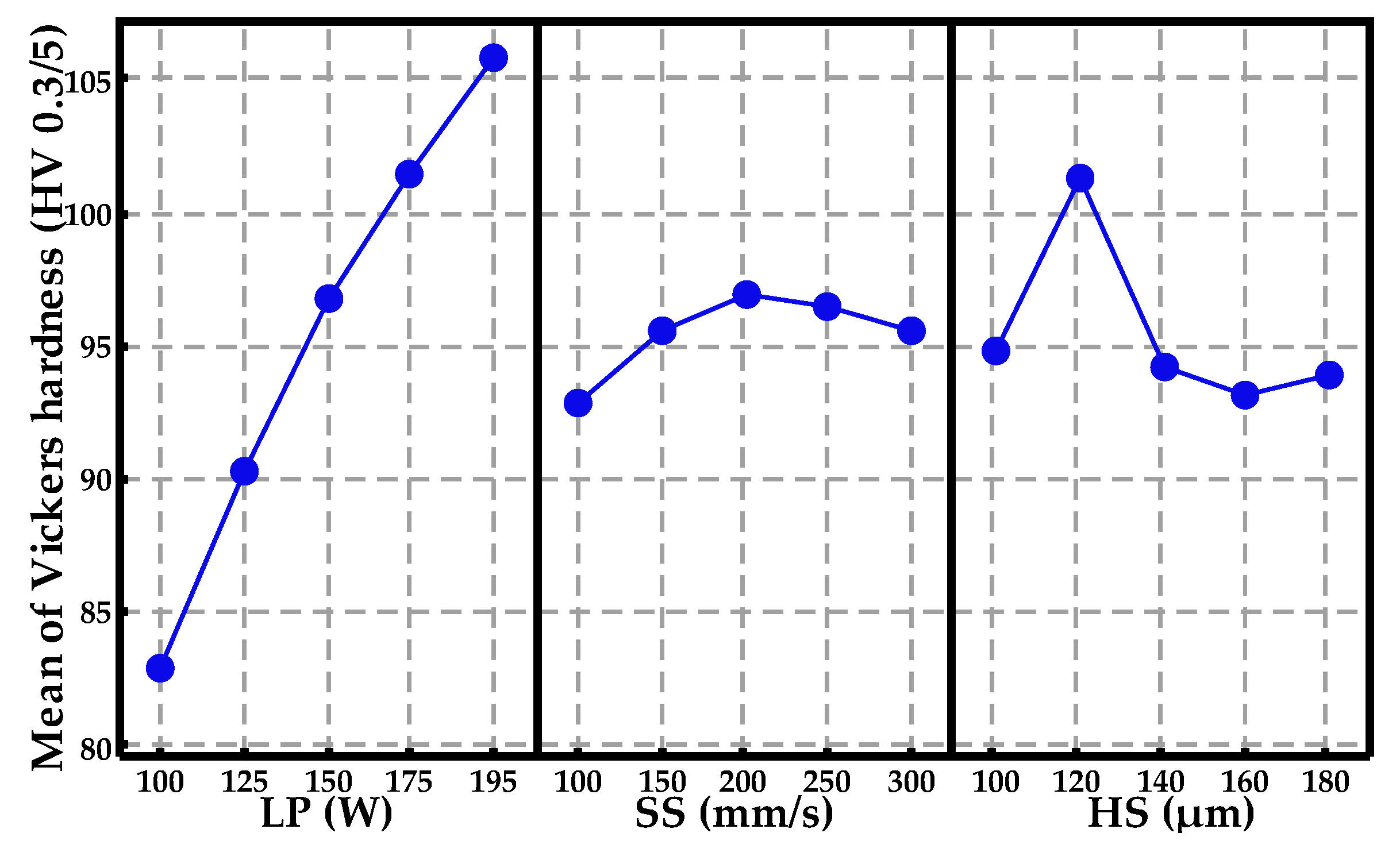
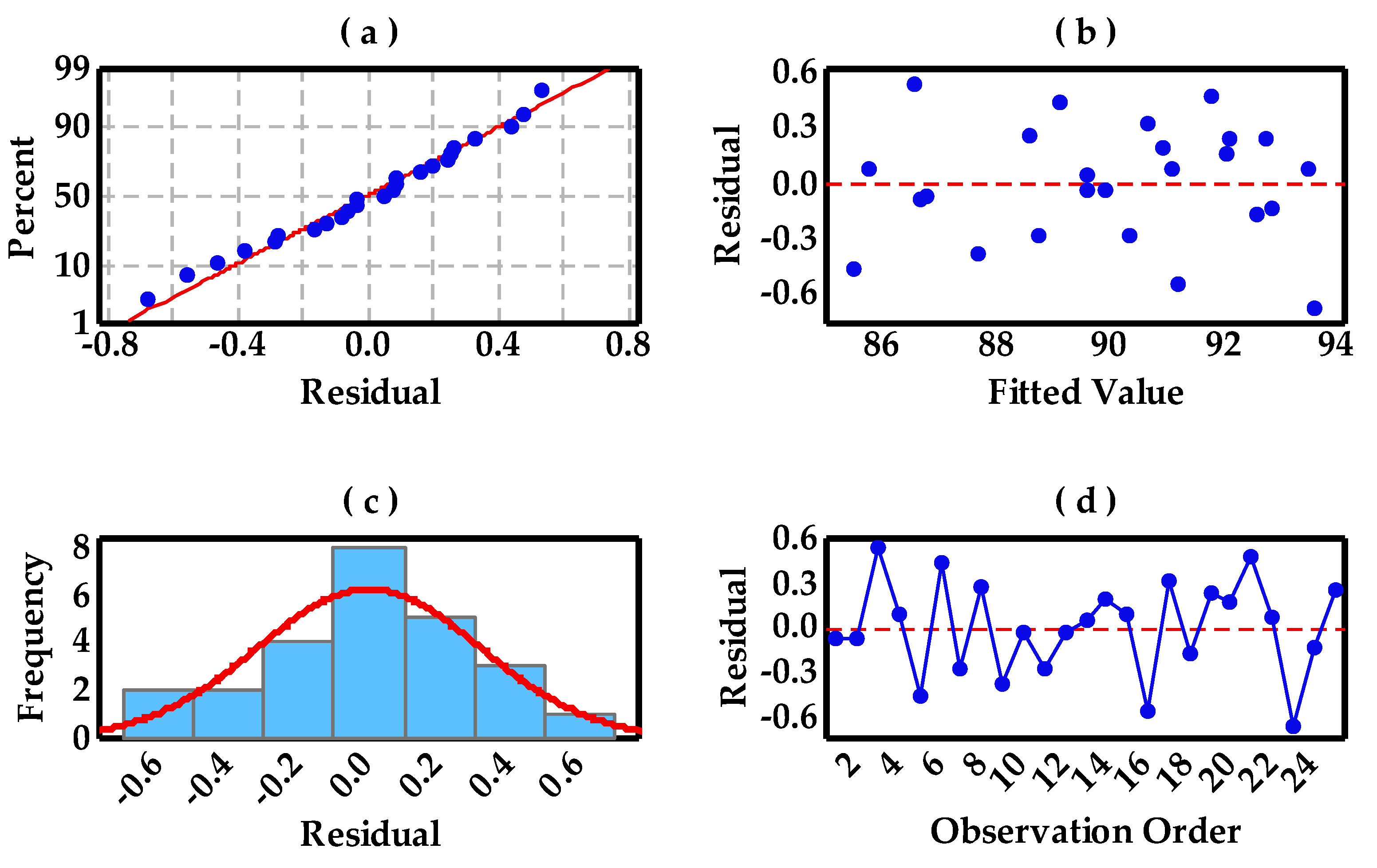
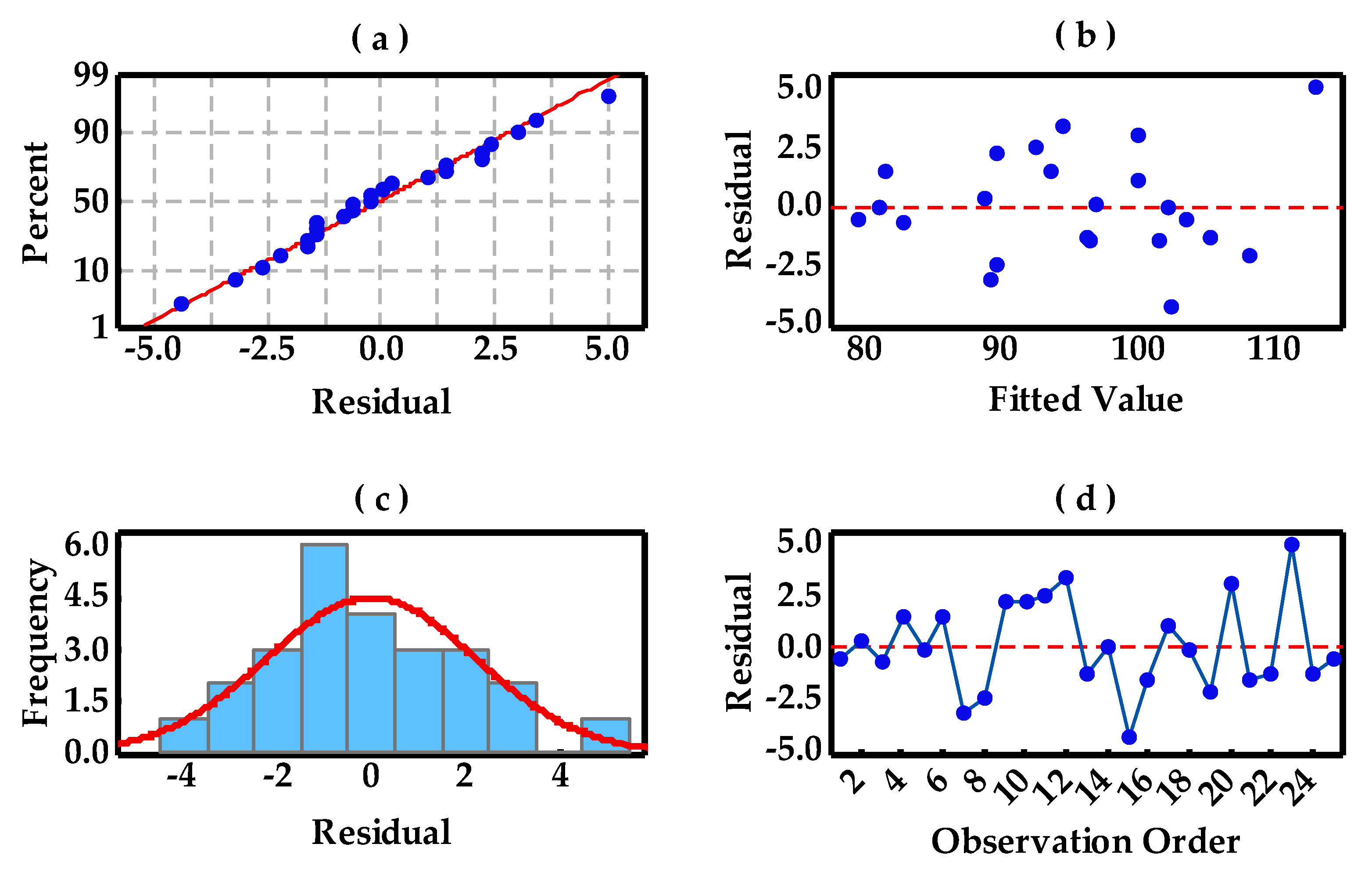
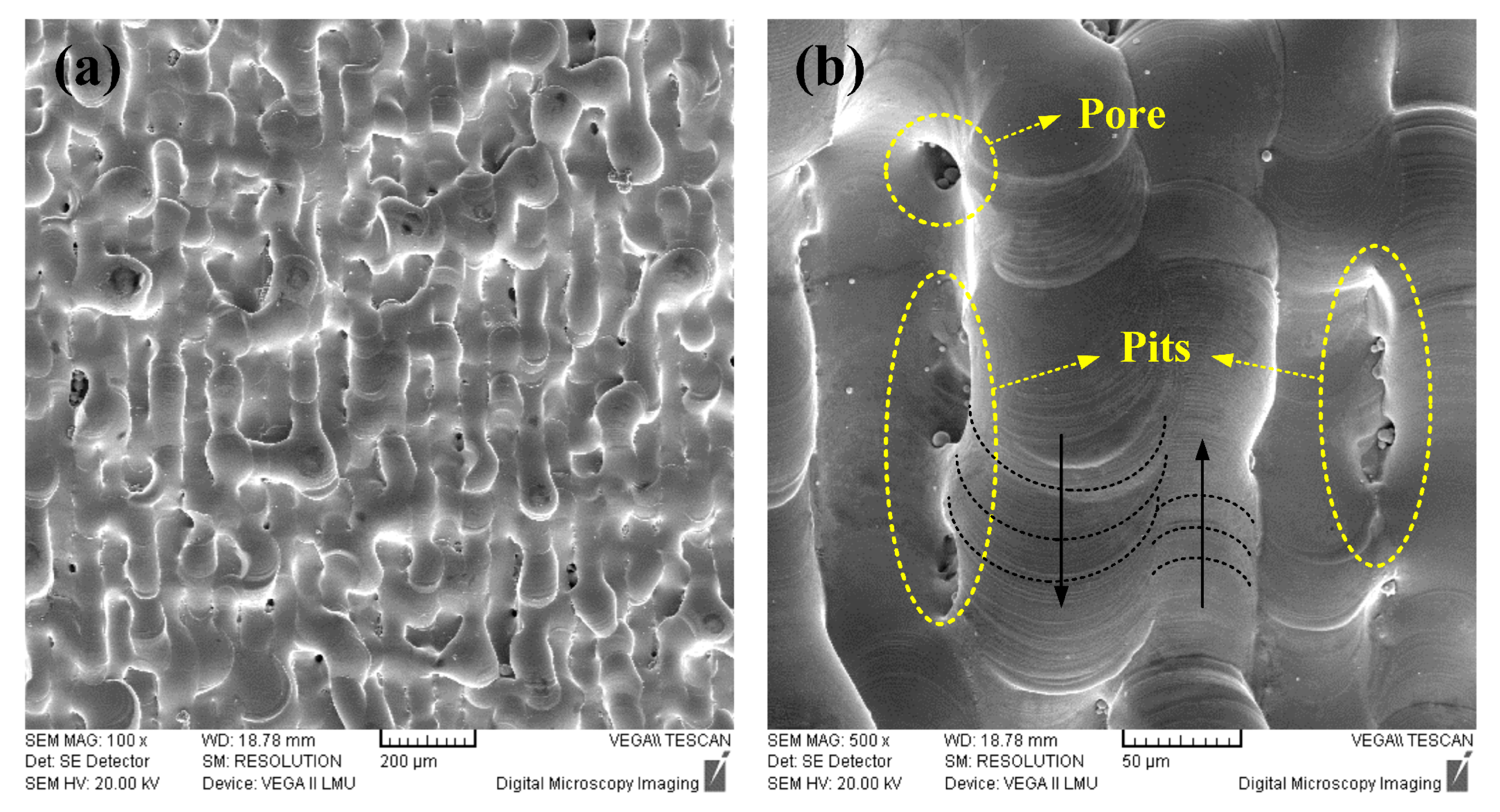
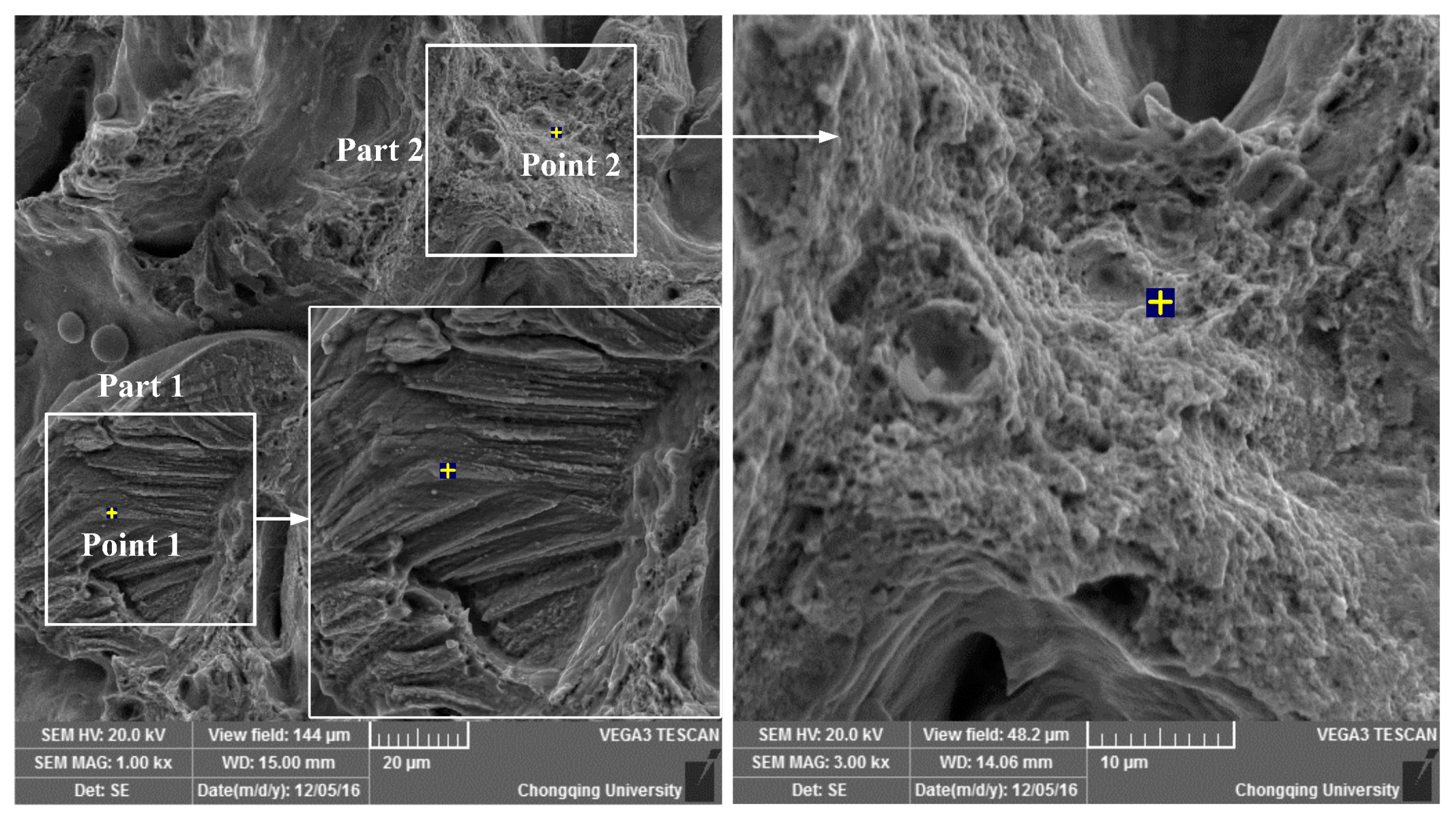
| Parameters | Value | Increment |
|---|---|---|
| LED | 100–1000 J/m | 100 J/m |
| LP | 50–195 W | 25 W |
| SS | 0.05–1.95 m/s | - |
| Layer thickness | 20 μm | - |
| Preheating temperature | 80 °C | - |
| Substrate material | Die Steel (MS1) | - |
| Atmosphere | Argon (Oxygen level < 0.1%) | - |
| Standard Order | Run Order | Factors | Responses | ||||
|---|---|---|---|---|---|---|---|
| LP (W) | SS (mm/s) | HS (μm) | Density (g/cm3) | RD (%) | Vickers Hardness (HV 0.3/5) | ||
| 1 | 6 | 100 | 100 | 100 | 7.577 | 86.71 | 79 |
| 2 | 5 | 100 | 150 | 120 | 8.282 | 86.61 | 89 |
| 3 | 19 | 100 | 200 | 140 | 7.657 | 87.10 | 82 |
| 4 | 3 | 100 | 250 | 160 | 8.211 | 85.84 | 83 |
| 5 | 1 | 100 | 300 | 180 | 7.717 | 85.04 | 81 |
| 6 | 20 | 125 | 100 | 120 | 7.728 | 89.57 | 95 |
| 7 | 13 | 125 | 150 | 140 | 8.296 | 88.51 | 86 |
| 8 | 15 | 125 | 200 | 160 | 7.991 | 88.85 | 87 |
| 9 | 18 | 125 | 250 | 180 | 8.284 | 87.29 | 92 |
| 10 | 8 | 125 | 300 | 100 | 8.010 | 89.59 | 92 |
| 11 | 24 | 150 | 100 | 140 | 8.000 | 90.09 | 95 |
| 12 | 22 | 150 | 150 | 160 | 8.135 | 89.92 | 98 |
| 13 | 11 | 150 | 200 | 180 | 7.820 | 89.69 | 95 |
| 14 | 23 | 150 | 250 | 100 | 8.213 | 91.12 | 97 |
| 15 | 12 | 150 | 300 | 120 | 7.925 | 91.20 | 98 |
| 16 | 25 | 175 | 100 | 160 | 8.257 | 90.68 | 95 |
| 17 | 10 | 175 | 150 | 180 | 8.244 | 91.03 | 101 |
| 18 | 17 | 175 | 200 | 100 | 7.786 | 92.42 | 102 |
| 19 | 16 | 175 | 250 | 120 | 7.769 | 92.37 | 106 |
| 20 | 4 | 175 | 300 | 140 | 7.943 | 92.22 | 103 |
| 21 | 14 | 195 | 100 | 180 | 8.347 | 92.41 | 100 |
| 22 | 21 | 195 | 150 | 100 | 7.966 | 93.68 | 104 |
| 23 | 2 | 195 | 200 | 120 | 8.128 | 93.04 | 118 |
| 24 | 9 | 195 | 250 | 140 | 8.017 | 92.87 | 104 |
| 25 | 7 | 195 | 300 | 160 | 8.049 | 93.10 | 103 |
| Factors Information | |||||
|---|---|---|---|---|---|
| Factor | Type | Levels | Values | ||
| LP (W) | Fixed | 5 | 100, 125, 150, 175, 195 | ||
| SS (mm/s) | Fixed | 5 | 100, 150, 200, 250, 300 | ||
| HS (μm) | Fixed | 5 | 100, 120, 140, 160, 180 | ||
| RD ANOVA | |||||
| Source | DF | Adj SS | Adj MS | F-Value | p-Value |
| LP (W) | 4 | 139.236 | 34.8090 | 170.59 | 0.000 |
| SS (mm/s) | 4 | 0.599 | 0.1499 | 0.73 | 0.586 |
| HS (μm) | 4 | 8.767 | 2.1918 | 10.74 | 0.001 |
| Error | 12 | 2.449 | 0.2041 | - | - |
| Total | 24 | 151.051 | - | - | - |
| Vickers Hardness ANOVA | |||||
| Source | DF | Adj SS | Adj MS | F-Value | p-Value |
| LP (W) | 4 | 1646.8 | 411.7 | 41.31 | 0.000 |
| SS (mm/s) | 4 | 48.8 | 12.2 | 1.22 | 0.351 |
| HS (μm) | 4 | 216.8 | 54.2 | 5.44 | 0.010 |
| Error | 12 | 119.6 | 9.967 | - | - |
| Total | 24 | 2032 | - | - | - |
| Elements | Weight Percentage (wt %) | |
|---|---|---|
| Point 1 | Point 2 | |
| Cu | 95.33 | 100 |
| Sn | 4.67 | 0 |
| Total | 100 | 100 |
© 2017 by the authors. Licensee MDPI, Basel, Switzerland. This article is an open access article distributed under the terms and conditions of the Creative Commons Attribution (CC BY) license (http://creativecommons.org/licenses/by/4.0/).
Share and Cite
Mao, Z.; Zhang, D.Z.; Wei, P.; Zhang, K. Manufacturing Feasibility and Forming Properties of Cu-4Sn in Selective Laser Melting. Materials 2017, 10, 333. https://doi.org/10.3390/ma10040333
Mao Z, Zhang DZ, Wei P, Zhang K. Manufacturing Feasibility and Forming Properties of Cu-4Sn in Selective Laser Melting. Materials. 2017; 10(4):333. https://doi.org/10.3390/ma10040333
Chicago/Turabian StyleMao, Zhongfa, David Z. Zhang, Peitang Wei, and Kaifei Zhang. 2017. "Manufacturing Feasibility and Forming Properties of Cu-4Sn in Selective Laser Melting" Materials 10, no. 4: 333. https://doi.org/10.3390/ma10040333





